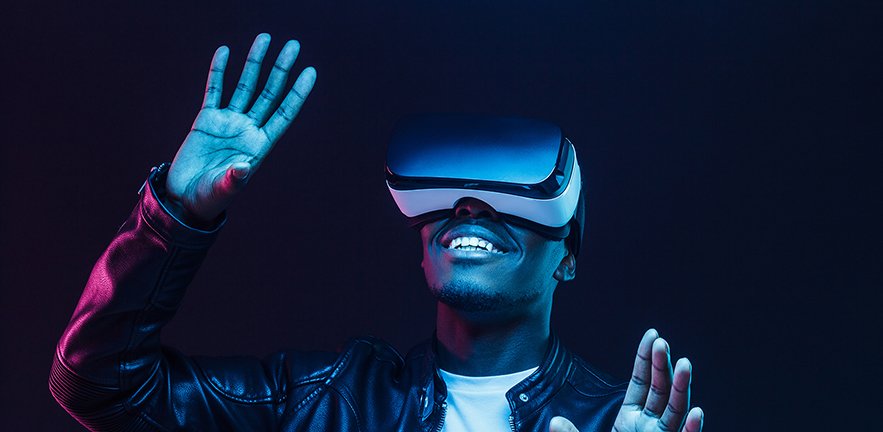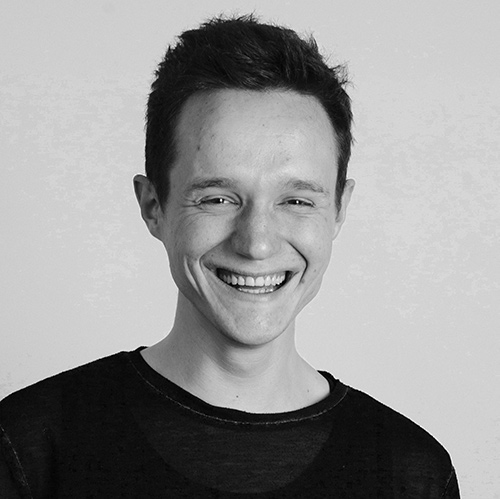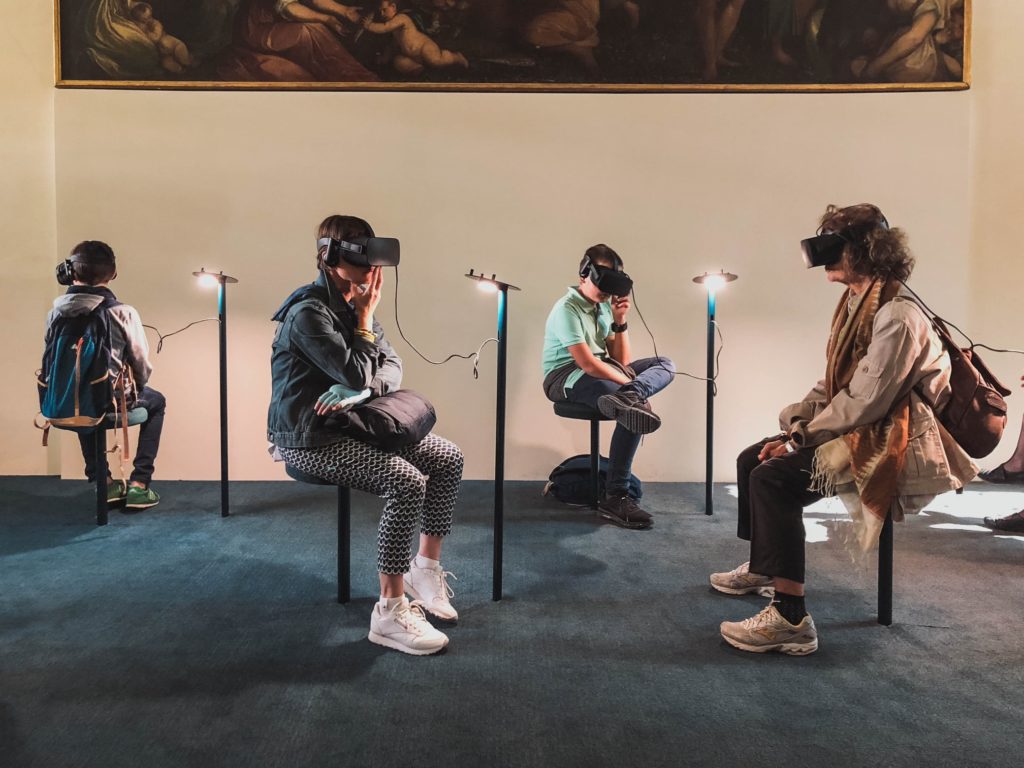Written by Szczepan Orlowski, XR Developer at Animorph.

Converging realities
Since Animorph‘s inception we have aimed to transform peoples’ lives using augmented reality (AR) and virtual reality (VR), as we believe they are the future computing platforms.
A quick clarification for those less familiar with augmented or virtual reality. Using a headset, VR entirely immerses you in a simulated world, while AR overlays digital information on top of the physical world. AR can be deployed on handheld devices, like Pokémon Go, as well as on holographic glasses, like the object recognition app Holopedia we recently developed.
Immersive computing allows for what was previously impossible in traditional computing. It is not only portable it understands the environment. In particular, AR has a potential to integrate with reality, facilitating effortless, hands-free interaction with our responsive surroundings. We are harnessing entirely new op-portunities resulting from these technological breakthroughs.
Amorphous beginnings
We incorporated in mid-2016, though our ideas and early software experiments had been taking shape before this. We initially connected over the dream of rein-venting perception, opening entirely new ways of being a conscious, empathetic part of the world. AR has the potential to become a sensory, and even cognitive, prosthetic. We perceive AR as a powerful infrastructure that must respect our privacy in order to be beneficial to humanity. Forming a worker co-operative has enabled us to venture into the cutting-edge tech industry, with a structure that protects the integrity of both us and our clients.
The name ‘Animorph’ testifies to the radically agile stance we took during our first three years. Our early projects spanned a breadth of disciplines, delivering high-end VR simulations, app optimisation, installations, interactive documentaries, educational courses, and many experimental R&D series, both commissioned and in-house. We knew from the outset that the wearable technology landscape was only just beginning to mature, and that it was important to stay nimble in our approach, listening and responding to the swelling currents.

Encouraging responses to our work have bolstered our resolve to continue materialising our vision. One example is the results of the evaluation of Virtual Inclu-sion, an app that enables users to witness exclusion of a schoolchild from the point of view of a fellow pupil. At critical moments the user takes action and sees the consequences. We developed this “empathy-machine” app with The Open University for ISD and Google.org Innovation Fund. The think-tank Demos, determined that 84% of the users of Virtual Inclusion reported they gained new knowledge and skills through using the app, and 89% said they would be likely to change their behaviour towards social exclusion.
Converging parallels
Last summer we received a grant from Brain MIC and National Institute for Health Research to evaluate our rehabilitation techniques for stroke patients, based on our wearable AR prototypes and a hard-fought application process. The Brain Injury Sensory Prosthetic we are developing aims to address the shortcomings of two current post-stroke rehabilitation techniques. As we await the ethics approval from the NHS to begin the study, our collaboration with the neuroscience team at University of East Anglia is gaining momentum.
In the meantime, other projects in the pipeline keep us busy. We have finished development and entered the evaluation stage of a VR exposure therapy app for people who struggle with speaking in public. This project has been created in partnership with We Speak to increase the impact of their successful analogue training. We are also working on a future-building AR app with communities in Belfast and The Executive Office. We are developing a multiplayer app visualising potential changes to interface areas, allowing local community members to voice their feelings and opinions. As new projects and opportunities arise, we try to engage with them wisely.
We are happy that our multidisciplinary team has proven itself capable of engaging with complex challenges. While often partnering with other organisations, we participate in the development process all the way from concept, to shipment, to maintenance. It helps us to appreciate all the relevant use cases for both AR and VR. These young media allow for fully interactive and immersive means of communication. We are particularly dedicated to exploring AR because it integrates digital perception into reality rather than replacing it.
While gaining experience as a software development company and a creative powerhouse, we realised our lack of experience in business operations was capping the potential impact of our efforts. We were incredibly lucky to have learned about the Cambridge Social Ventures Incubator at a STIR to Action magazine launch in 2017 (who can convince us there is no point in attending magazine launches?). We attended The Social Venture Weekend at Cambridge Judge Business School in the autumn of 2017, where we began to grasp the magnitude of what we needed to learn in order to become a truly sustainable company.

We joined the Cambridge Social Ventures Incubator in September 2018, marking the start of a new era for Animorph. The programme allowed us to understand the nuts and bolts of a healthy business, which in turn helped us rewire a lot of our critical operations, ensuring the robustness of our organism. For example, enshrining our principles in a Social Value Policy was instrumental to our credibility as a social enterprise.
Our main mentor, Mark Goodson, opened our eyes to a both broader and deeper perspectives on the direction our company was headed. His brilliant and sensitive insights lit parts of the path we did not know how to approach. Everyone involved in running the programme has equipped us with tools to protect the core mission, empowering us to pursue our vision. During the time at the incubator our team has grown, allowing us to take on projects in parallel, and benefit from a wider viewing angle overall. As we are leaving the incubator, we know that we will remain connected to it as we engage with the largest challenge we’ve encountered so far — setting up another business vehicle necessary to deliver our underpinning AR platform project.
Materialising a shared future
Early last year we published a blog post on our research in co-operatives investment landscape. This investigation has continued in the background of our daily activities. We are currently weighing up two multi-stakeholder structures, but our direction remains clear — we want the future to belong to the commons, and we will go to great lengths to usher that future closer.
We do not see technology separate from the social tissue, and so through our work we strive to empower the users and foster empathetic relationships between them. As our interfaces become ever more adaptable thanks to more seasoned software architectures, novel inputs such as eye tracking, and machine learning, we aim for the systems we create to operate in an ethically unambiguous fashion. Our goal is to expand human potential in a way that puts the users in charge of the objective function, choosing what is important to them.
One of our recent prototypes, Holopedia, aims to take the legacy of Wikipedia into a wearable AR dimension. Using the app it is possible to look at an object and hear information about it. We are further developing this framework with a view of applying it to the medical and training industries, but further use cases continue to emerge.
Exploring how technological, social, and economic dimensions intertwine, driven by the simple urge to create meaningful and practical solutions to unsolved problems in order to bring people together, never ceases to thrill us.
The Social Ideas Podcast
In this episode of The Social Ideas Podcast, Szczepan Orlowski from Animorph and Mark Goodson from Cambridge Social Ventures discuss how the workers’ cooperative format is helping Szczepan and his colleagues at Animorph to deliver tech-based products and stay true to their ethos of sustainability and support for all.


Anna Freudenthaler
Congratulations Szczepan! I remember couchsurfing during Breaking Convention ’17 and we had great conversations, I am happy to see your projects thriving and I still feel excitement listening about them. It’s a beauty having intelligent people doing nice things with passion. Heartfelt greetings from Vienna!